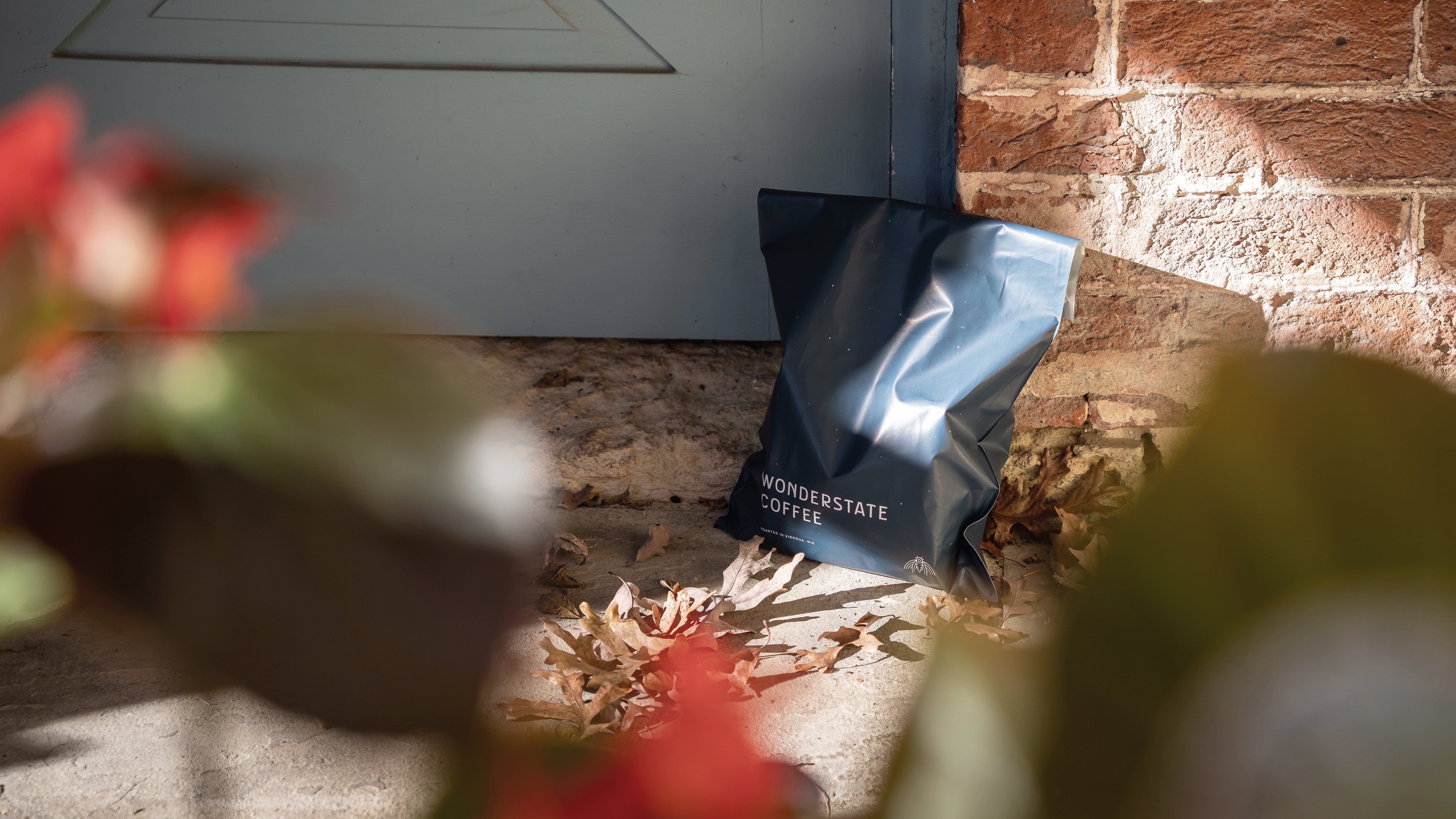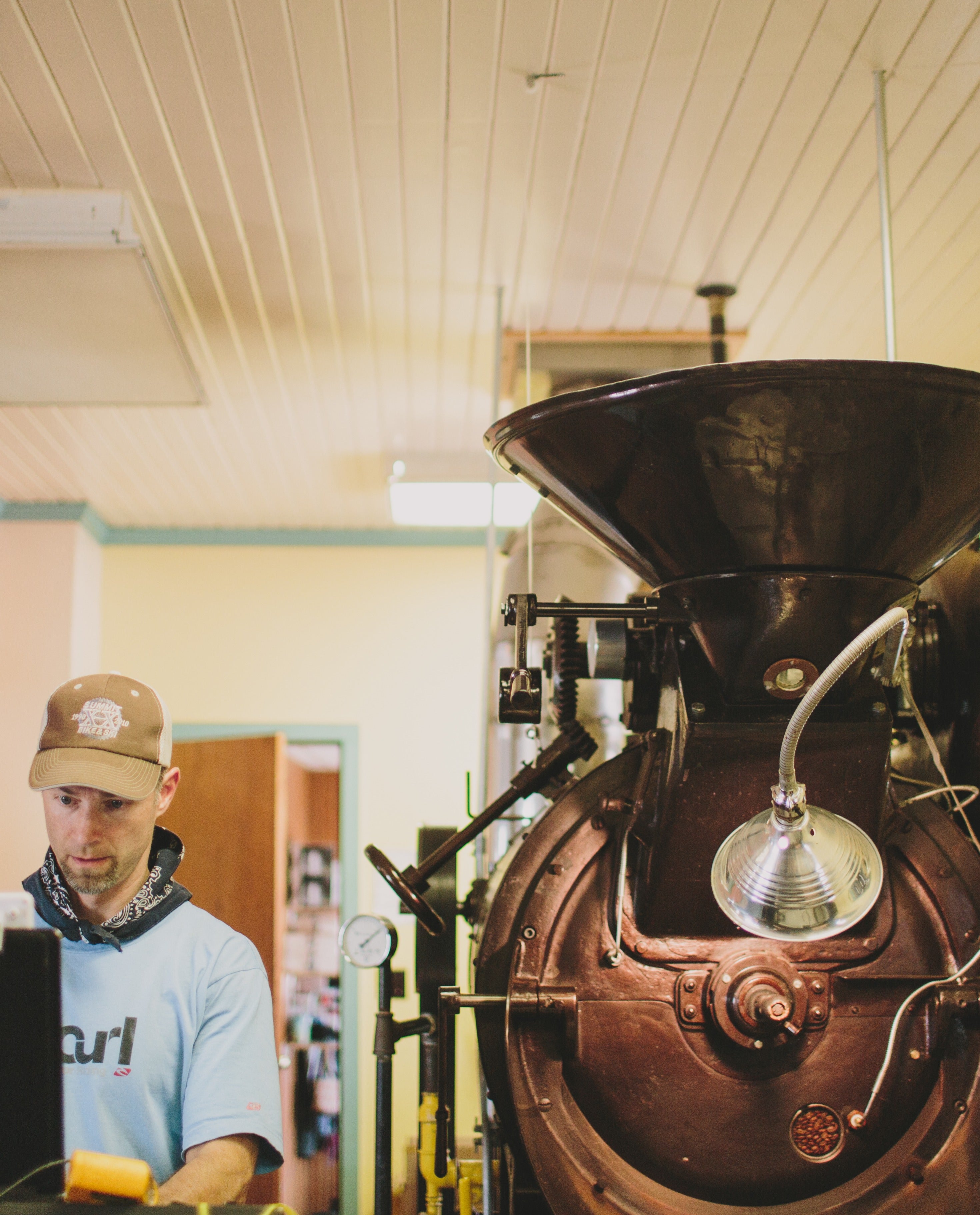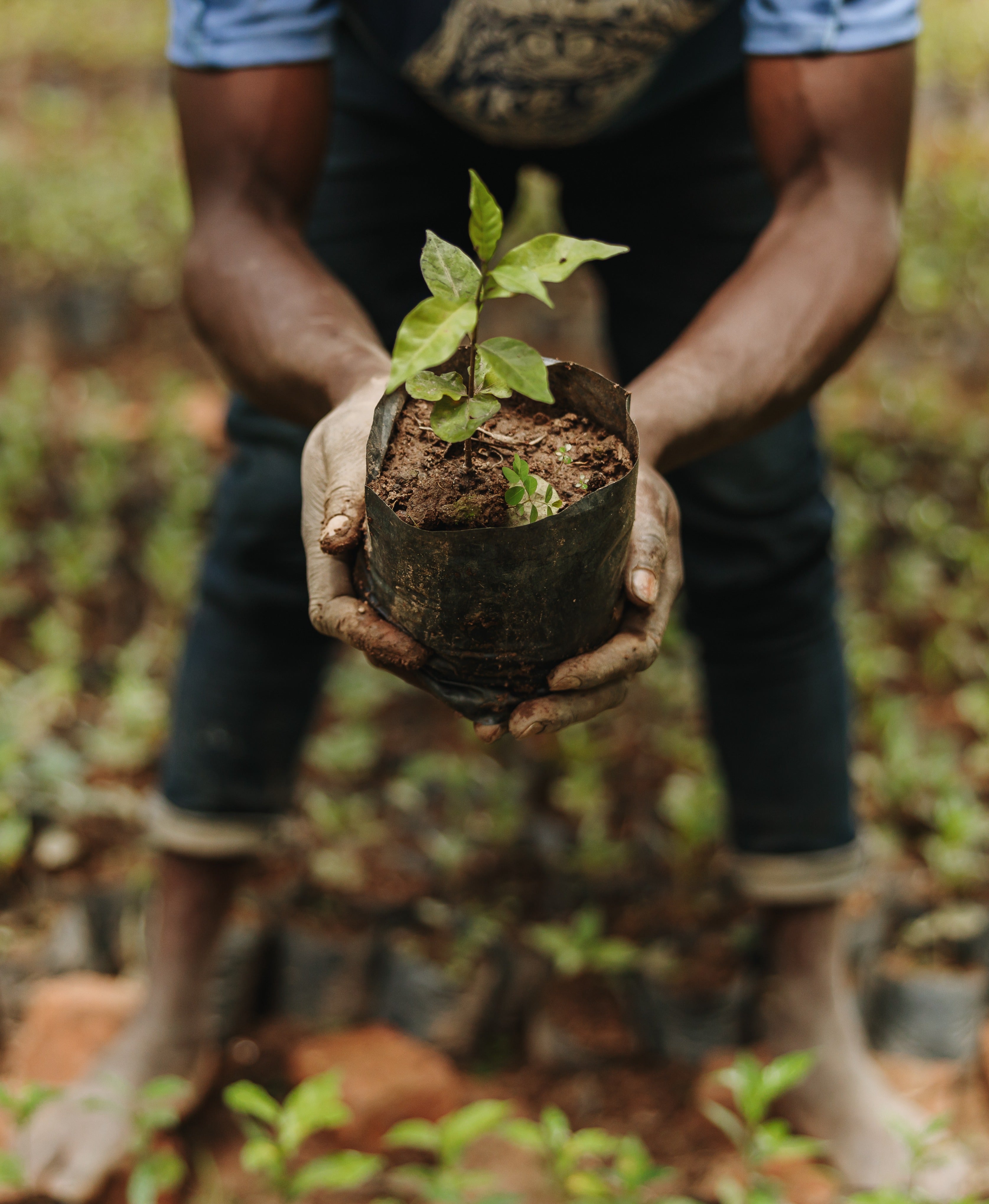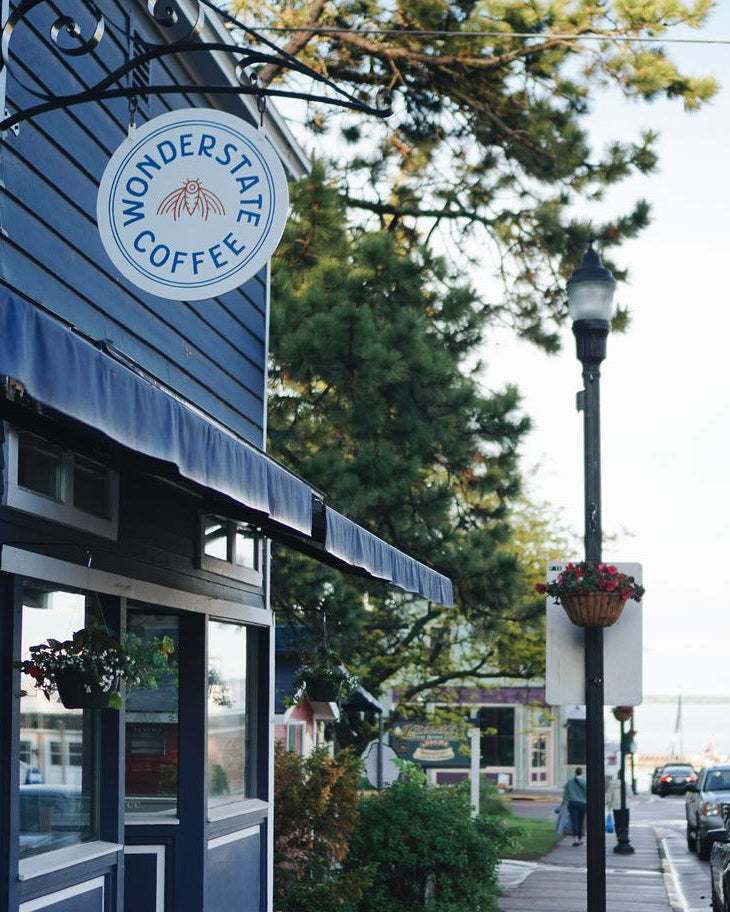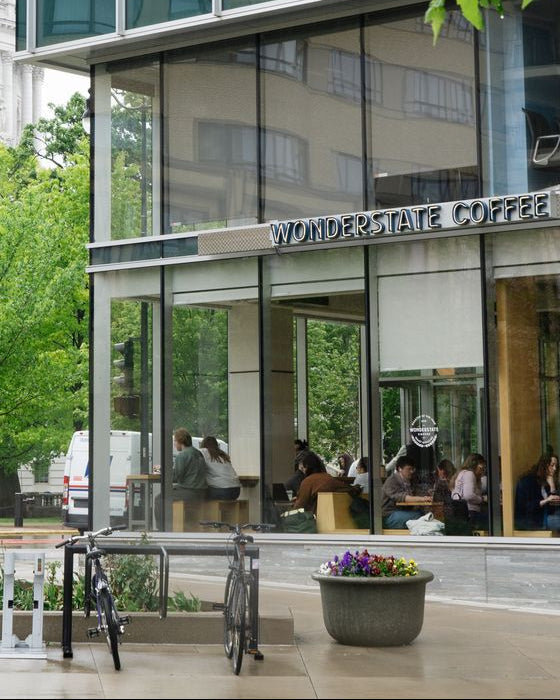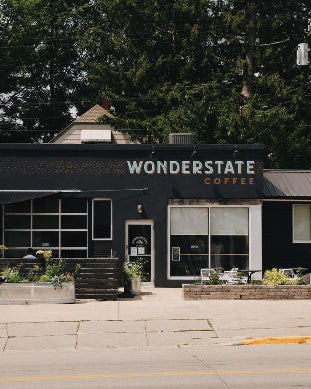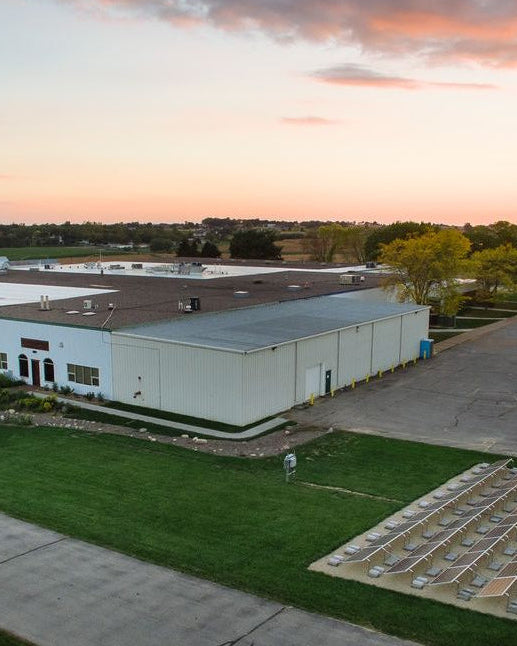words by Andy Radtke | photos by Ray Siler & Caleb Nicholes
At Kickapoo Coffee Roasters, we have a thing for hand-crafted excellence. Sure, modern technology offers lots of time-saving, labor-reducing mechanical tools to get the job done, and done well, but we like to think the human hand (and eye, and judgment, and imperfection, and…) should get a fair crack at it too.

Take the new sign at our cafe on Main Street in Viroqua, WI. When it came time to display the essence of Kickapoo Coffee for our nearest, dearest friends in our hometown, we considered all options. We could build it out of cut wood, cold metal, even hot neon, or we could get back to the magic of the artist’s touch. Hand-crafted coffee is best sipped behind the traditional standard of a hand-painted sign, especially in Viroqua—the small town built eclectic over decades by generations of talented hands.
Who you gonna call?
 So, we checked in with our friend, local street-artist-about-town, Pete Hodapp, for help locating the best of the best. It didn’t take long to invite his recommended talent to come down for a peek. Revered Minneapolis sign-painter, Forrest Wozniak, was delighted to take on the project—as are we with the sign he made.
So, we checked in with our friend, local street-artist-about-town, Pete Hodapp, for help locating the best of the best. It didn’t take long to invite his recommended talent to come down for a peek. Revered Minneapolis sign-painter, Forrest Wozniak, was delighted to take on the project—as are we with the sign he made.
The design itself is the result of a collaborative process between Forrest, designer RT Vrieze of Knorth Studios and Kickapoo Coffee—a bit of a retro twist to look a few years back over its shoulder at the finest of Art Deco, when hand-made signs enjoyed an American heyday. We introduced that vibe to our contemporary brand elements, and voila!, all who happen along Main Street Viroqua get an extra friendly hello in the morning.
That’s what hand-painting does, and no one does it better than Wozniak. Scores of Minneapolis neighborhoods are living proof. Forrest has built his business by returning the warmth of artisan craft to an urban landscape under digital threat. In our age of Photoshop and digital plotters, anyone with a few hours to spare and a computer can output a sign. It takes a seasoned artist (and a paint brush or two) to make magic. Although, Forrest has a more workman-like view.
“There is still a very practical argument for sign painting,” he says. “It’s often the only option for dealing with surfaces like stucco or brick—and paint works best for large structures.” And high structures. Forrest is most comfortable when his feet are sky high, having created signs on smoke stacks and high-rises in the city. In fact, he’ll be about 120-feet up an Iowa building (hanging from the top on swing staging, window-washer-like) as you read this. Still, most of his work happens at a less finger-tingling level, about 15-30 feet above the pavement.
Each one, teach one.
That’s a mantra of Forrest’s. If you happened to have seen him painting our sign over the July 4th holiday, you know he didn’t work alone. We were tickled to learn of his love to teach his craft, so the craft doesn’t die. A few of Viroqua’s own future sign painters came out to help and learn. Alden Ashley and Leo Shonka were more than instrumental in the making. They are key to the future of homespun goodness.
“The silver lining in Viroqua is that we (Hodapp dipped a brush or two as well) worked with kids. It’s essential to teach young people, to give them the opportunity to work on real-world signs,” Forrest said.

Artist Pete Hodapp works with next generation sign painter, Leo Shonka.
Is it weird to look to an ages-old craft for hope of a more beautiful future? We don’t think so. In fact, it may be the key. As Forrest says, sign painting will never go out of style as long as there is a need for signs. Sign painting is affordable resiliency. It is a commitment to one’s architecture; it makes it look like you’re here to stay. Besides, as he puts it, “It’s a vocation that survived the depression because there was a lot of demand for ‘going-out-of-business’ signs.”
Okay. We’re going with that. Not out of business, of course, but the here to stay part. With a whole measure of beautiful mixed in. By hand.
Read more
Our Customer Support and Education Specialist, Trevor Gruehn, is a hell of coffee brewer, and he’s looking for some competition. That’s just what he’s found at this year’s USBC Brewers Cup. For...
At Kickapoo, we’re blessed to be located not only in a beautiful part of the midwest, but one filled with a community of extremely talented artists and craftspeople. Whenever possible, we love to...

